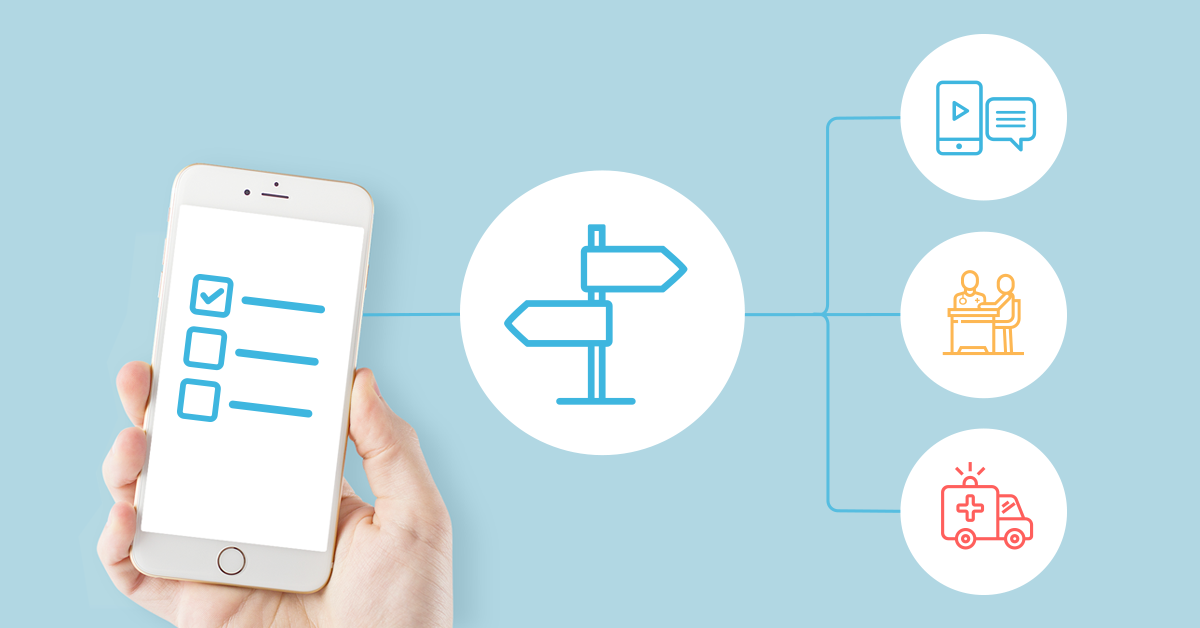
Primary Healthcare Provider, Capio Ringen, Improving Productivity by 33 Percent
Capio Ringen’s care unit is one of Stockholm’s largest care units, with approximately 27 000 registered patients. At the end of 2018, they had long lines of patients waiting to get into their drop-in physical care unit, low phone accessibility, 4-6 weeks waiting time for a non-urgent planned doctors’ consultation, which meant a stressful working environment for the staff and a poor experience for patients.
In December 2018, Capio Ringen became the first of Capio’s 104 primary care units to implement a digital entry point for patients through their website. Since they lacked resources to meet demand, staff realised they had to change their way of working.
- Every day, 100-150 people queued in the waiting room for Capio Ringen’s health centre, while the health centre received over 400 telephone calls daily.
- The drop-in clinic often had to close early because it did not have the capacity to help all patients
- As early in the morning, all emergency appointments were booked, and patients were directed to call again the next day
- 27% of patients could not reach the health centre by phone
- The waiting time for non-emergency physical doctor visits by a specialist doctor was 4-6 weeks
Digi-physical Healthcare
Capio Ringen replaced the physical drop-in with digital triage to better help and prioritise their patients by using Doctrin’s digital platform. The patient could reach the service through their website online or when calling the care unit to receive a link to the platform via text message. Capio Ringen managed to transfer a little more than a third of all patients to the digital channels with an active information campaign.
The digital point of entry enables the patient to start their journey by filling in a digital medical history questionnaire, which is then used by triage nurses who guide the patients to self-care, a digital visit with a nurse, doctor, or if needed, arrange a physical consultation.
The communication between the patient and healthcare staff is done using secure encrypted asynchronous chat. This means neither the patient nor the healthcare personnel need to log in simultaneously to be able to communicate. As opposed to a video chat where both need to be online simultaneously, asynchronous chat enables both patients and healthcare personnel flexibility—allowing healthcare staff to handle several cases at once, improving efficiency significantly and patients to respond at a time and place they choose. Since both triage nurses and doctors have the medical report summarising the patient’s medical history, most consultations do not require more than a couple of messages back and forth to resolve the patient concerns. It is always up to the patient to confirm if they are satisfied with their help, i.e., can the consultation be closed.
The Results have Surpassed All Expectations
- The share of patients who have gotten a same-day call back have increased from 73 to 95 percent
- The waiting time for planned physical doctor consultations have reduced from 4-6 weeks to 1-3 days
- Continuity has improved; for patients with more than three visits, 20 percent more can see the same doctor
- Productivity has increased with 33 percent more patients being helped each clinical hour
Healthcare staff confirm that what was a stressful and overwhelming working environment is now calm and structured. Katarina Wettin, Regional Medical Chief, Capio, shared her thoughts in Capio S:t Görans magazine Communicare:
” We were almost shocked about how quickly the change happened. We instructed the patients who came in for a drop-in visit how they could start their visit filling in the questionnaire online.”
Digitalisation is More than Technology
Unn Hellberg, Chief Operating Officer at Doctrin explains how digitalisation is more than implementing new technology. Above all, she says it’s about changing the ways of working, enabling more efficient ways of collaborating and communicating.
“We have implemented the platform at more than 150 digital care units and have learned that the first step is to identify how a digital point of entry will affect scheduling, collaboration, and ways of working. Many underestimate the value of continuous evaluation and development, but our experience is that you have to start somewhere and fine-tune using data as well as feedback from healthcare personnel and patients”.
After implementing Doctrin’s platform in over 150 units around Sweden, Unn Hellberg confirmed that each unit needs to find its own way of working that suits the business’ unique conditions, but that the challenges it faces are often the same: telephone availability and long waiting times, patient satisfaction and work environment.
“We put a lot of our focus on ensuring that you choose working methods that have the potential to solve the health centre’s main challenges. The most fun is the positive feedback we have received. Staff generally find Doctrin’s platform to be fun and easy to use. When both patients and healthcare professionals enjoy digital care, we believe that transition will take place in a very good and positive way, and achieve as good results as Capio Ringen realised”, concludes Unn Hellberg.
Are you interested in learning how your practice can achieve the same results? Contact our Senior Business Development Manager Elise Rydemark .

